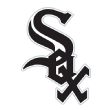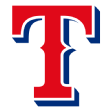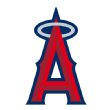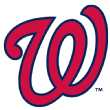You are using an out of date browser. It may not display this or other websites correctly.
You should upgrade or use an alternative browser.
You should upgrade or use an alternative browser.
Essential The Official ESPN Insider Thread (ESPN+)
- Thread starter the cool
- Start date
More options
Who Replied?
I've said this before, but I'll repeat it: This isn't a lock. Rutschman is the consensus No. 1 prospect in the class, but I have heard from multiple sources that the Orioles will at least explore other options, notably Andrew Vaughn, to strike the best possible deal, since they pick again at 42, 71 and 79.
UPDATE: The Orioles could also consider JJ Bleday at this pick.

OK, I think this one's a lock. They definitely take Witt over Vaughn and I think they might take Witt over Rutschman.

Vaughn could slip past here; the White Sox are also linked to C.J. Abrams, who is also slipping in some teams' eyes. I don't think there's a fourth name here beyond those two and Rutschman.

Bleday and Hunter Bishop seem to be the Marlins' top two targets, but they were linked earlier to Abrams as well. Captain Jeets has even seen Vaughn and Rutschman in the past week.

I think this is Vaughn's floor, which would be a huge win for the Tigers. They're also the team that's highest on Nick Lodolo.

I could see scenarios in which they get Abrams, Bleday or Greene, but not where they miss out on all three.

Not a lock, but a very frequent link the past few weeks. It feels like the Reds are almost certain to take a college arm, so if it isn't Lodolo it might be Alek Manoah or George Kirby.

This rumor has been hot the past 48 hours -- that the Rangers are on Jung and might be shifting draft philosophy completely from their previous, more tool-centric approach.

Atlanta's mix here seems to include Rutledge (who threw at their stadium for team officials), Hunter Bishop, Corbin Carroll, Manoah and Shea Langeliers.

I've also heard the Giants linked with Manoah, Bryson Stott and Kirby.

I keep hearing college guys here, including Bishop and Stott as well.

Very likely a college guy here too; if Kirby is gone I would bet they take a college bat.

I've heard the Twins connected to an array of names too, including Matthew Lugo from Puerto Rico, but other teams believe the Twins are more likely to go college with their first pick (Stott, Hoese) and go for upside prep kids with subsequent picks.

I've heard Philly all over the place -- Kirby, Carroll, Brennan Malone and Hoese, in particular, which is one player from each of the four major categories.

This connection keeps coming up as well and would fit the Angels' recent modus operandi of going for huge upside with their first pick.

I think this is Carroll's floor; he could go as high as 8 or 9 but probably won't go 10-12. The Diamondbacks have four picks in the top 34 and I would bet they diversify their portfolio, trying to go two college and two prep if the board permits.

Another rumor that has picked up steam recently and fits Washington's general trend of taking one of the most famous names on the board when they pick.

Langeliers has recovered nicely from a broken hamate he suffered the first weekend of the spring, and as a no-doubt catcher he has pushed himself into the teens.

I've heard the Cards with Wilson (a lot, recently) and Maurice Hampton.

I believe Seattle would prefer a college player here, but the way this scenario unfolds, I don't think the right name gets here. Callihan is one of the most advanced pure bats in the class, even though he lacks a clear position.

I've heard the Braves linked with some prep arms for this second pick and Georgia Tech power-first catcher Kyle McCann perhaps at pick 60.

Thompson has top-10 stuff with some questions about his durability after a forearm injury his sophomore year -- and the Rays have zero qualms about taking players with upside who fall for reasons like injury concerns. I've also heard them with Espino, who, as a 6-foot high school right-hander, also doesn't fit the industry mold.

The Rockies were heavy at the ACC tournament, with GM Jeff Bridich in attendance, to see Busch play.

I've heard the Tribe with Busch and Wilson too, in that order, as well as Hampton.

Henderson seems likely to go in this range even with some widely mixed opinions on him in the industry.

They might be able to float Priester to pick 33 or 34, or take another prep arm like JJ Goss or Espino and switch to a college guy if someone like Wilson, Busch or Kam Misner is here.

I've got them taking a college bat here -- Wyatt has a really good swing but needs some work to unlock more power -- yet I've heard them with a number of high school arms too, such as Espino or Malone, none of whom will be available at this pick in this scenario.

The Brewers have been a no-nonsense, best-player-available team since Ray Montgomery, now the team's VP of scouting, came over as scouting director in 2014. Baty would be a top-10 pick if he weren't already 19½ as a high school player, but the bat looks like it will play, and one of the drawbacks of age, the lack of time for physical projection or growth, isn't a factor given Baty's current size.

Most of the names they've been linked to -- Hoese, Wilson, Baty -- are probably gone by this pick, which is probably why I'm hearing Oakland more with Jones, the fastest player in the class, as well as Goss or Logan Davidson.

I've also heard the Yankees with Kirby and Henderson, neither of whom seems that likely to get here, along with Hinds as another bet on huge power as they've done successfully with other picks such as Aaron Judge.

The Dodgers, like Tampa Bay, have a habit of targeting guys who have top-10 upside but some flaws on their résumés, such as Misner's high strikeout rate.

It is pure coincidence that I have the Astros taking a Clemson player with their first pick as they did in 2018 with Seth Beer, who, by the way, has raked at two levels this spring.
2019 MLB Draft: First-Round Order
1. Orioles (47-115)
2. Royals (58-104)
3. White Sox (62-100)
4. Marlins (63-98)
5. Tigers (64-98)
6. Padres (66-96)
7. Reds (67-95)
8. Rangers (67-95)
9. Braves (compensation for C. Stewart) *
10. Giants (73-89)
11. Blue Jays (73-89)
12. Mets (77-85)
13. Twins (78-84)
14. Phillies (80-82)
15. Angels (80-82)
16. D-backs (82-80)
17. Nationals (82-80)
18. Pirates (82-79)
19. Cardinals (88-74)
20. Mariners (89-73)
21. Braves (90-72)
22. Rays (90-72)
23. Rockies (91-72)
24. Indians (91-71)
25. Dodgers (92-71)
26. D-backs (compensation for M. McLain) *
27. Cubs (95-68)
28. Brewers (96-67)
29. Athletics (97-65)
30. Yankees (100-62)
31. Dodgers (compensation for J.T. Ginn) *
32. Astros (103-59)
* For unsigned 2018 first-rounder
Kap Kapperson
Pro
k draft has been updated with the latest intel, including the Atlanta Hawks acquiring the Brooklyn Nets' 2019 first-rounder.
See if you can view this:
https://convert.neevia.com/docs/eca...ft_ First-round movement and latest intel.pdf
A rising NBA Africa draft pipeline at Basketball Without Borders
DAKAR, Senegal -- As Toronto Raptors president Masai Ujiri delivered a fiery closing speech to more than 60 young athletes, with Dikembe Mutombo and NBA commissioner Adam Silver to his left and NBA Africa vice president Amadou Gallo Fall behind him, he reiterated the same passionate message he echoed all camp long: "Africa is now!"
If Toronto's championship roster and the success of Giannis Antetokounmpo, Joel Embiid and Pascal Siakam weren't proof enough, the emphasis NBA teams placed on scouting this year's Basketball Without Borders Africa further illustrates the elevated importance of the region in today's game.
The camp that started as "The Africa 100" in 2003 has developed into a scouting necessity, with several U.S.-based executives making the trip to Dakar to start getting a feel for the talent level and infrastructure, which have yielded 40 first- and second-generation African players currently in the NBA. A record 14 of the 30 NBA teams were represented in some capacity, and some international scouts even prioritized BWB Africa over the under-18 European Championships, traveling to Senegal before catching the final couple days of the U18s in Volos, Greece.
Strolling down Martin Luther King Boulevard from Terrou-Bi Resort to the Radisson Blu on the coast of Dakar, you see that the beach is jam-packed with athletes of all ages training. Sprints, lunges, squat jumps, defensive slides, pickup futbol -- you name it. There are dirt soccer lots and basketball courts with constant competition, featuring teenagers anywhere from 6-foot-4 to 6-8 with long arms, big hands, broad shoulders and quick feet.
In Senegal, not every court is perfect. Sometimes half the backboard is missing. Few rims are regulation 10 feet. Players use sand-filled water bottles for cones. Yet the local resources continue to improve with the NBA's involvement.
The majority of BWB Africa took place at Dakar Arena, an innovative 15,000-seat facility with an NBA feel that was completed less than a year ago. It rivals many arenas in the U.S., a game-changing development for sports nationwide. Rwanda has added a similar arena, which appears to be just the beginning.
"We are going to help with more facilities," Silver told reporters after BWB Africa. "This facility here in Senegal is a perfect example. We want to scale these facilities throughout the continent."
Then there's the NBA Academy Africa in Saly, Senegal, which features two full courts and four hoops. From technical director Roland Houston to assistant technical director Astou N'Diaye to player development coach Joe Touomou (who discovered a young Embiid), the academy has a strong group of coaches in place to turn intriguing prospects into well-rounded players.
"When I got to the NBA Academy I was just, like, 'I've just got to give thanks, it's all God's work," said 2019 BWB Africa MVP Samuel Ariyibi, who used to pray it wouldn't rain in his hometown of Lagos, Nigeria, so he could train on the outdoor court nearby. "I wouldn't imagine myself playing in an academy with good facilities, good coaches all there for you, physio, strength and conditioning coach, development coach, a head coach, an assistant coach, a teacher."
During BWB Africa, Silver and deputy commissioner Mark Tatum toured a Senegal SEED Academy to get a feel for the best development model across the continent. SEED Academy was the breeding ground for Gorgui Dieng and a handful of other NCAA players, and continues to be a staple in the African development system. In fact, Fall held the annual SEED Academy Hoop Forum project in the days leading up to BWB, which featured everything from on-court workouts to life skills.
Between the NBA Academy Africa, SEED Academy, the Jr. NBA, BWB Africa and Ujiri's Giants of Africa project, the development structure is evolving, and there are more resources on the way.
"We realize that with a billion plus people throughout Africa; for us to have the impact we think we can, we really need to plant both feet firmly in Africa," Silver said, "and right now we're a couple of toes in, so we have work to do."
Basketball Africa League taking shape
At the NBA Africa reception, Fall announced the host cities for the inaugural season of the Basketball Africa League (BAL): Cairo; Dakar; Lagos, Nigeria; Luanda, Angola; Rabat, Morocco; and either Tunis or Monastir, Tunisia, with Kigali, Rwanda, hosting the final four.
Fall, who has spearheaded the growth of African basketball, also said that half of the teams will wear Nike gear, with the other half sporting Jordan Brand. Six domestic-league champions from certain countries get automatic bids into the BAL, while FIBA will run a qualifying tournament in September or October to determine the other six. The BAL regular season is expected to begin in March.
"The reason we are moving so quickly, and I think this is record time from concept to actually launching a league, is because we believe in Africa," Silver said.
Each club will be made up of eight local players, two foreign players and two players who can be from any country in Africa. Initially, the BAL figures to be an attractive place for local players and former NCAA players who don't have a strong European market to come home and start building a professional career. Eventually, the goal is to have enough resources, coaching and competition to be able to develop young prospects through the BAL system without them needing to go abroad.
One thing NBA teams should consider: employing a director of African scouting to monitor the pulse on the continent. The most forward-thinking NBA teams have already had eyes and ears in Africa for some time, but mostly in a consulting fashion. Expect that to change.
While the best African prospects have often ended up in the U.S. or Europe at a young age, having a continentwide development structure forces teams to place a greater emphasis on scouting here. The pool of players is already daunting at times, and the growth could force teams to expand their scouting departments even further. Someday, the U16 and U18 African championships might be as heavily scouted as those in Europe. And while lack of coaching is one of the continent's biggest hurdles, that could eventually change with the right training and financial investment in place.
"We believe beyond the creation of a new league, beyond the NBA's involvement, through sport in Africa, basketball and all sports can be an economic engine for the entire continent, and that is what we're seeing already," Silver said.
Top prospects at BWB
With the roster cut down from its usual 60 players to 40, there were few elite prospects to take the floor, but five players still stood out from the bunch and are all names to keep an eye on long term.
1. Samuel Ariyibi | SF | Age: 17.5 | Nigeria | NBA Academy Africa 2020
The clear-cut MVP of the camp, Ariyibi kept his foot on the gas all four days, shining as a slashing, playmaking wing who defends multiple positions with incredible energy at 6-foot-8. He has made tremendous strides since joining the NBA Academy Africa in October 2018, fine-tuning his ballhandling and playmaking while becoming more of a threat in midrange spots, though shooting remains his biggest weakness. While he impressed as a driver, facilitator and finisher, it was Ariyibi's overall intensity that stood out most. If he doesn't corral the defensive rebound, he's the first one down the floor. If he's not in the primary action on offense, he's scrapping for loose balls to create extra possessions. On the defensive end, he's picking up 94 feet, pestering point guards, battling bigs, rotating for blocks and diving on the floor.
"I know my defense can get me anywhere, that's one thing I'm sure," Ariyibi told ESPN.
Although he's not as long, Ariyibi's do-it-all nature and relentless motor reminded some staffers of when Siakam played at BWB Africa. Like Siakam, Ariyibi lost his father, in June 2016. The youngest child with two sisters and a working mother, Ariyibi quickly became the "man of the house," as he put it.
Ariyibi, who compares physically to a young Shaun Livingston, shoots on the way down at times, doesn't always look at the rim from 3 and has a slender frame. But when you combine his defensive versatility, competitiveness, offensive feel and approach to the game, he has a chance to be drafted one day. Ariyibi is a Class of 2020 recruit who continues to gain steam at the NCAA level.
2. Cheikh Sow | PG/SG | Age: 17.1 | Senegal | NBA Academy Africa 2021
The least touted of the NBA Academy Africa prospects coming into the event, Sow put together an outstanding camp thanks to his combination of physical tools, playmaking and aggressive slashing. While slender, the 17-year-old Senegal native passes the eye test at 6-5 with a 6-11 wingspan and a huge 8-9 standing reach, elite measurables for a combo guard.
Sow's brightest moments came when he had the ball in his hands, as he's a slithery driver with a natural pace and the ability to sneak through tight crevices with long strides. He changes speed and direction fluidly and plays low to the ground, allowing him to get to his spots. Despite his thin frame, he doesn't shy away from contact and consistently made an effort to put pressure on the rim.
He has a strong feel for the game as well, hitting the roll man in stride, kicking out to open shooters and seeing the floor impressively. Sow's biggest issue is his shooting, but the ball comes out of his hand with nice rotation and he proved capable of knocking down corner 3s and midrange pull-ups when left alone. On top of that, he's a disruptive defender.
3. Babacar Faye | SF | Age: 17.5 | Senegal | NBA Academy Africa 2021
Faye shined as arguably the most physically intriguing prospect to take the floor, at 6-8 and 176 pounds, with a 7-0 wingspan, 8-10½ standing reach and extremely long strides to the rim. He's still at an early stage of his development, with high hips and an immature frame, and he might still have another inch or two to add. But that doesn't hold him back as a leaper. He consistently hammered home dunks well above the rim off one leg or two, while also utilizing his length and athleticism around the rim defensively.
Outside of open-court plays and occasional defensive flashes, Faye is still very much a blank canvas. He gets knocked off balance on his way to the rim, doesn't have the best feel as a finisher when forced to rely on skill and needs to improve as a decision-maker in traffic. Most important, he leaves much to be desired as a perimeter shooter. Once he misses one, he gets gun-shy and loses his aggressiveness in other areas. Even so, Faye did show the ability to operate at different speeds as a driver, finish above the rim and defend multiple positions on the other end. He certainly could hold long-term NBA upside.
4. Joshua Ojianwuna | C | Age: 15.8 | Nigeria | NBA Academy Africa 2021
The youngest player at the camp, Ojianwuna stood out as one of the more intriguing prospects to take the floor given his physical profile, agility and flashes of touch. Ojianwuna, who started playing basketball only at age 13, stands 6-10 with a 7-2½ wingspan, 9-0½ standing reach and a shredded frame. He's a mobile rim-runner who can finish in space, particularly off his right leg, which he favors despite shooting with his right hand. When he's fully dialed in, Ojianwuna is a monster offensive rebounder with the potential to step out and make an elbow jumper with decent mechanics. He shows glimpses as a rim protector, rotating from the weak side with solid instincts and verticality. More often than not he plays with a strong motor, creating extra possessions and doing the little things.
With that said, Ojianwuna's confidence comes and goes, as he plays somewhat of a tense game and doesn't always show the consistent assertiveness staffers and scouts would like. His offensive feel and skill level also remain a work in progress. Although still extremely young, Ojianwuna doesn't always affect the game as his tools and talent would suggest. Even so, it's hard to ignore his upside given his age and late start.
5. Thierno Sylla | PF/C | Age: 15.9 | Guinea
The 6-10 Sylla really stood out physically with his 7-5 wingspan and big standing reach. Fresh off an under-16 African championship during which he averaged 10.5 points and 10.0 rebounds in 26.4 minutes, Sylla tantalized with his long arms, fluid athleticism and freakish leaping ability. Narrow-hipped with skinny legs -- yet an upper body that should fill out in time -- Sylla holds all the attributes teams look for in a run-and-jump big man, as he's very light on his feet. Sylla also showed glimpses of skill, knocking down occasional spot 3s in drills and attacking off the bounce in space.
Sylla is still at an extremely early stage of skill development, though, and he failed to have much of a positive impact in live action. His defensive instincts and discipline are a major work in progress. The game moves a little too fast for him right now, which shows up on both ends, as he'll break off plays and jack up pull-up 3s. His demeanor also goes through peaks and valleys over the course of a game.
As we look ahead to the 2020 and 2021 drafts, the field is loaded with first- and second-generation African prospects. From Nigeria's Precious Achiuwa and Charles Bassey to Senegal's Amar Sylla and Biram Faye to Cameroon's Paul Eboua, 2020 should have a heavy African influence.
Then, in 2021, Senegal's Khalifa Diop and Ibou Dianko Badji, along with Nigeria's Usman Garuba (born in Spain) are all draft-eligible. In 2022, Congo-born Jonathan Kuminga could project as a top pick. And this is just the tip of the iceberg. As Ujiri said, "Africa is now."